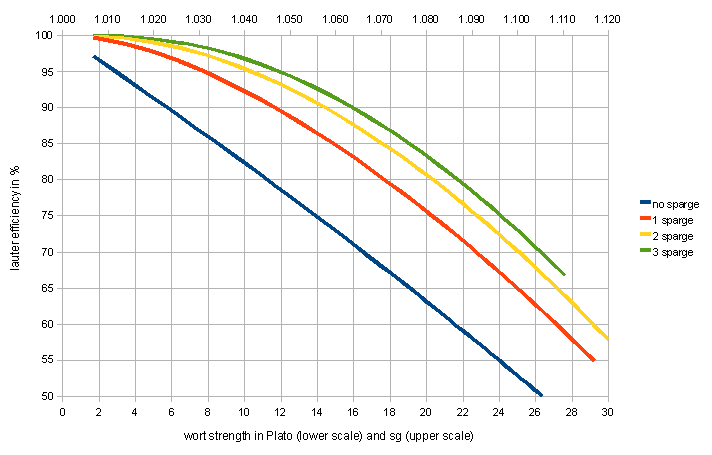sideshow_ben
Well-Known Member
I looked through this forum and didn't find (easily) any comments on the merits of a batch sparge vs. a single one, by which I mean:
1. Batch sparge: Mash normally, mash out, drain out the liquid, add more hot water, stir, drain out, and repeat if necessary a few times if the MLT is small.
2. Single sparge: Mash out normally, add all the hot water needed to make up the total wort volume, drain out.
If I stir well enough and have MLT that is large enough, does a single sparge as described above have any great disadvantages to batch sparge with only two drainings?
Thanks!!!
-ben
1. Batch sparge: Mash normally, mash out, drain out the liquid, add more hot water, stir, drain out, and repeat if necessary a few times if the MLT is small.
2. Single sparge: Mash out normally, add all the hot water needed to make up the total wort volume, drain out.
If I stir well enough and have MLT that is large enough, does a single sparge as described above have any great disadvantages to batch sparge with only two drainings?
Thanks!!!
-ben




